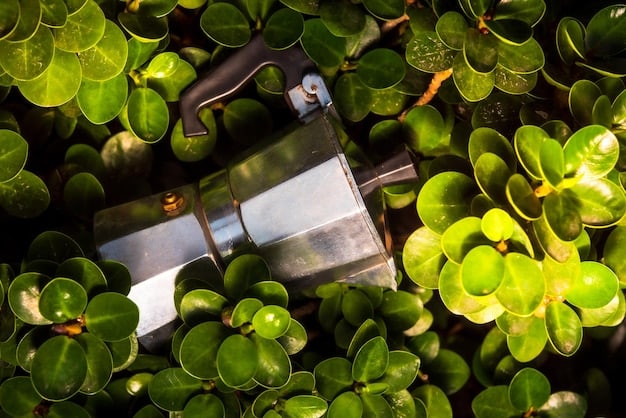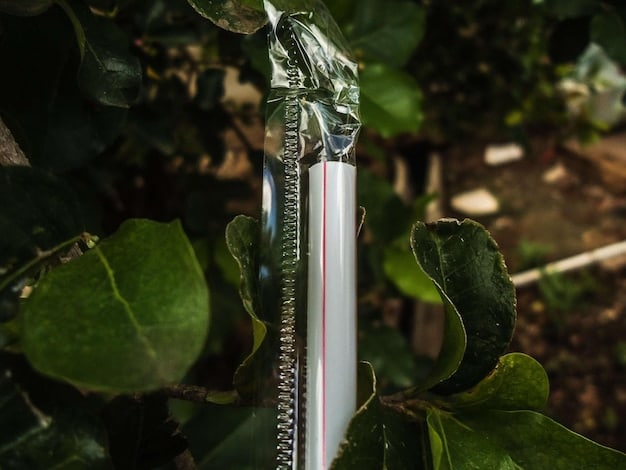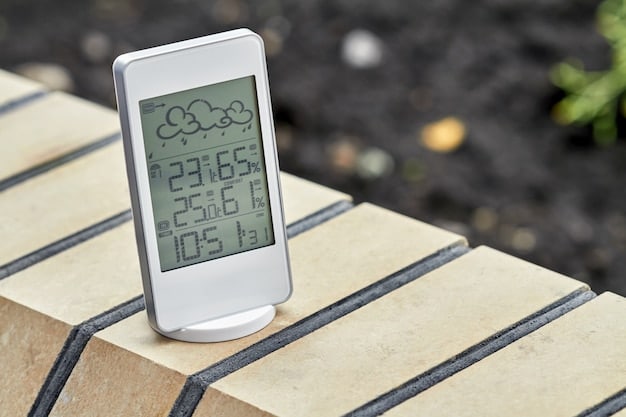Water Conservation: 3 Smart Irrigation Systems for US Gardens

Discover how to conserve water and save money in your US garden with smart irrigation systems. Learn about drip irrigation, smart controllers, and weather-based systems to optimize water usage and promote a healthy, sustainable garden.
Are you looking for ways to be more eco-friendly and save on your water bill? Water conservation is crucial, especially in areas prone to drought. One effective solution is to implement smart irrigation systems in your garden. Let’s explore three smart irrigation systems that can help you save water and money.
Understanding the Need for Water Conservation in US Gardens
Water scarcity is becoming an increasingly pressing issue across the United States. As gardeners, we have a responsibility to use water wisely and efficiently. Simple measures, such as collecting rainwater and mulching, can make a difference. However, adopting smart irrigation systems takes water conservation to the next level.
These systems use advanced technologies to deliver water precisely where and when plants need it, minimizing waste and maximizing efficiency. By understanding the benefits of these systems, you can make informed decisions and help reduce your environmental footprint.
The Impact of Traditional Watering Methods
Traditional watering methods, such as sprinklers and hoses, often lead to significant water waste. Sprinklers can distribute water unevenly, leading to overwatering in some areas and underwatering in others. Hoses, especially when manually operated, can result in excess water runoff.
- Overwatering can lead to root rot and other plant diseases.
- Uneven watering stresses plants, making them more susceptible to pests and diseases.
- Water runoff carries fertilizers and pesticides into local waterways, polluting the environment.
Smart irrigation systems address these issues by delivering water directly to the root zone, reducing water loss through evaporation and runoff. They also allow for precise control over watering schedules, ensuring that plants receive the right amount of water at the right time.
Investing in smart irrigation is not just good for the environment; it’s also good for your wallet. By reducing water consumption, you can significantly lower your water bill and save money in the long run. Plus, a healthy, well-watered garden is more productive and aesthetically pleasing.
Drip Irrigation Systems: Precision Watering for Efficiency
Drip irrigation systems are known for their precision and efficiency in delivering water directly to plant roots. Using a network of tubes and emitters, these systems minimize water waste by reducing evaporation and runoff. They’re particularly well-suited for vegetable gardens, flower beds, and orchards.
The concept behind drip irrigation is simple: deliver water slowly and steadily directly to the root zone. This ensures that plants receive the moisture they need without excess water being lost to the environment.

Components of a Drip Irrigation System
A typical drip irrigation system consists of several key components that work together to deliver water efficiently. Understanding these components will help you design and maintain your system effectively:
- Water Source: Connects to your main water supply, such as a faucet or outdoor spigot.
- Backflow Preventer: Prevents water from flowing back into your main water supply, protecting it from contamination.
- Filter: Removes debris and sediment from the water, preventing clogs in the drip lines and emitters.
- Pressure Regulator: Reduces water pressure to the appropriate level for the drip system, typically around 20-30 PSI.
Emitters are the most crucial element: these small devices release water slowly and directly to the plants. They come in different flow rates, allowing you to customize the amount of water each plant receives. Some emitters are adjustable, giving you even greater control over watering.
Drip irrigation systems are easy to install and can be adapted to suit different garden layouts and plant types. They’re also relatively low-maintenance, requiring only occasional cleaning and inspection to ensure optimal performance.
Smart Irrigation Controllers: Automating Water Schedules
Smart irrigation controllers take precision watering to the next level by automating water schedules based on factors like weather conditions and plant needs. These controllers connect to local weather data to adjust watering times dynamically, ensuring that plants receive the right amount of water without wasting any.
Gone are the days of setting a timer and forgetting about it. These controllers use real-time data to optimize watering, saving you both time and resources.
How Smart Controllers Work
Smart controllers utilize a variety of sensors and data sources to determine the optimal watering schedule:
- Weather Data: Accesses local weather forecasts to adjust watering based on temperature, rainfall, and humidity.
- Soil Moisture Sensors: Measures the moisture content of the soil, providing feedback on when and how much to water.
- Plant Databases: Incorporates information about different plant types and their specific watering requirements.
- User Input: Allows you to customize watering schedules based on your own observations and preferences.
By combining these data sources, smart controllers can create highly efficient watering schedules that adapt to changing conditions. Some controllers also offer mobile app integration, allowing you to monitor and adjust your watering schedule from anywhere.
Installing a smart controller is a straightforward process, often involving replacing your existing controller and connecting it to your home Wi-Fi network. Once set up, the controller will automatically adjust your watering schedule based on the parameters you’ve set, saving you time and water.

Weather-Based Irrigation Systems: Adapting to Real-Time Conditions
Weather-based irrigation systems are a specific type of smart controller that relies primarily on weather data to adjust watering schedules. These systems use evapotranspiration (ET) rates, which measure the amount of water plants lose to evaporation and transpiration, to determine how much water to apply.
ET-based systems are particularly effective in areas with variable weather patterns, as they can automatically adjust watering to compensate for changes in temperature, humidity, and rainfall.
The Science Behind Evapotranspiration (ET)
Evapotranspiration is a key factor in determining plant water needs. It represents the combined effects of evaporation (water loss from the soil surface) and transpiration (water loss from plant leaves). ET rates vary depending on factors such as temperature, humidity, wind speed, and solar radiation.
Weather-based irrigation systems use ET data to calculate the amount of water plants need each day. They then adjust watering schedules to replenish the water lost through evapotranspiration, ensuring that plants receive the right amount of water without overwatering.
Benefits of Weather-Based Systems
Weather-based irrigation systems offer several advantages over traditional and even other smart irrigation methods:
- Automatic Adjustments: Automatically adjusts watering based on real-time weather conditions, saving water and reducing the risk of overwatering.
- Reduced Water Waste: Minimizes water waste by delivering only the amount of water plants need.
- Cost Savings: Lowers water bills by reducing water consumption.
- Improved Plant Health: Ensures that plants receive the right amount of water for optimal growth and health.
While weather-based systems are effective, it is crucial to ensure accurate weather data. Some systems rely on publicly available weather data, while others incorporate their own weather sensors. Using a system with reliable weather data ensures that your watering schedule is as accurate and efficient as possible.
Implementing smart irrigation is a wise investment for any home gardener looking to conserve water and save money. By choosing the right system and properly maintaining it, you can enjoy a healthy, thriving garden while reducing your environmental impact.
| Key Point | Brief Description |
|---|---|
| 💧 Drip Irrigation | Precision watering directly to plant roots, minimizing water waste. |
| ⏱️ Smart Controllers | Automated watering schedules based on weather and plant needs. |
| 🌦️ Weather-Based Systems | Adapt watering to real-time conditions using evapotranspiration rates. |
| 🌱 Plant Health | Efficient watering promotes healthier and more productive plants. |
Smart Irrigation Systems: Saving water and promoting plant health
▼
Smart irrigation systems reduce water waste, lower water bills, and promote healthier plant growth by delivering water precisely when and where it’s needed, using data-driven schedules.
▼
Drip irrigation delivers water slowly and directly to plant roots through a network of tubes and emitters, minimizing evaporation and runoff compared to traditional watering methods.
▼
Smart controllers use weather data, soil moisture sensors, plant databases, and user input to create optimal watering schedules that adapt to changing conditions.
▼
Evapotranspiration (ET) measures water loss from plants and soil. Weather-based irrigation systems use ET rates to calculate the amount of water plants need daily.
▼
Consider your garden’s size, plant types, local climate, and budget. Drip irrigation is great for targeted watering, while weather-based systems adapt well to changing conditions.
Conclusion
Implementing these smart irrigation strategies not only aids in conserving precious water resources but also contributes to healthier gardens and reduced utility bills. By embracing these advancements, US gardeners can lead the way in sustainable living, ensuring lush landscapes for years to come.





